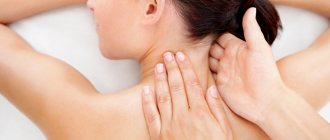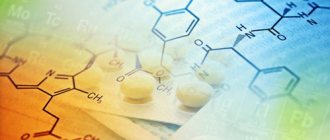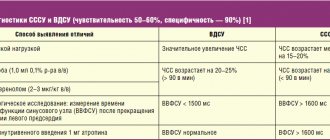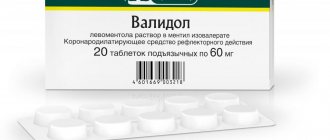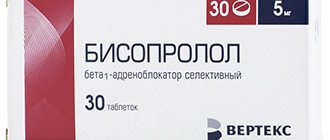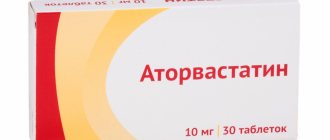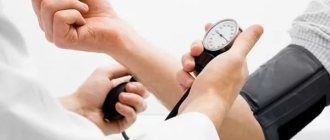Throughout life, a person repeatedly experiences abdominal pain. Under the age of 50, most often the cause of pain is not organic, but functional in nature, when drug therapy is most likely to be effective. The cause may be intestinal colic (in children in the first months of life), irritable bowel syndrome, biliary dyskinesia, dysfunction of the sphincter of Oddi, etc. About a third of cases of functional pain are accompanied by spasm of the smooth muscles of the gastrointestinal tract. This is why antispasmodics are so widely used without a doctor’s prescription. Providing a pronounced analgesic effect and normalizing the functioning of the organ, they, unlike non-narcotic and opioid analgesics, do not interfere with the mechanisms of pain, that is, they do not “erase” the picture of the disease, which is critically important in diagnosis.
Nota bene!
When a client asks for a remedy for abdominal pain, it is necessary to exclude urgent situations in order to send the sufferer to a doctor in time. These include:
- Severe pain that prevents you from sleeping or doing anything, lasts longer than 1-2 hours.
- Severe abdominal pain is accompanied by vomiting.
- Severe pain is accompanied by elevated body temperature - 38.5°C and above.
- Severe pain is accompanied by loss of consciousness.
- Severe abdominal pain in a pregnant woman.
- The abdominal muscles are tense and the stomach is as hard as a board.
- Diarrhea mixed with bright red blood.
- The stool is dark and tarry.
- Vomiting blood.
- Abdominal pain is accompanied by vomiting, diarrhea and severe dehydration.
There is a solution for each case!
1 procedure
1 Botulax procedure Gentle and safe effect For mild cases of hypertonicity of the masticatory muscles RUB 15,000. 15,000 rub.
3 procedures
A course of 3 Botulax procedures Gentle and safe effects For moderate and severe stages of hypertonicity RUB 35,000. 35,000 rub.
Botulinum therapy can help if you have a habit of clenching your jaw tightly and grinding your teeth, you suffer from increased abrasion of enamel and destruction of crowns.
Cellular mechanism of pain
Smooth muscle cells are mainly found in the large intestine. There are significantly fewer of them in the small intestine. The mechanism of cell contraction depends on the concentration of calcium ions in the cytoplasm. The sources of calcium are the extracellular space, connected to the cytoplasm through calcium (slow) membrane channels, as well as the intracellular depot. The release of calcium causes the muscle cell to contract. The contraction of muscle cells forms a spasm and the person feels pain.
The process of muscle contraction is most often triggered by the mediator acetylcholine, binding to muscarinic cholinergic receptors (M-cholinergic receptors). Thus, blockade of M-cholinergic receptors leads to a decrease in tone and relaxation of smooth muscles (and therefore helps relieve abdominal pain). This, in particular, is the basis for the mechanism of action of a group of drugs called M-anticholinergics.
The interaction of calcium with calmodulin leads to the interaction of actin with myosin and cell contraction. CAMP (cyclic adenosine monophosphate) and cGMP (cyclic guanosine monophosphate) weaken the interaction of calcium with calmodulin and also impede the entry of calcium ions into the cell. The level of cAMP and cGMP is controlled by phosphodiesterase (PDE), which destroys excess of these nucleotides. Thus, if you reduce the activity of PDE, the concentration of calcium ions in the cytoplasm will decrease and the tone of the muscle cell will decrease.
Based on the described mechanisms for regulating the calcium concentration inside the muscle cell, which are disrupted under pathological conditions and lead to spasm, the main groups of antispasmodics have been created:
- M-anticholinergics (atropine, hyoscine butyl bromide).
- PDE IV inhibitors (drotaverine).
- Blockers of calcium release from intracellular stores or sodium channel blockers (mebeverine).
- Calcium channel blockers.
What happens if hypertonicity of the masticatory muscles is not treated?
The masseter muscle, which moves the lower jaw, is the most powerful in the group of facial muscles. By contracting, it is capable of creating a force of up to 80-100 kg (compare - in order to chew food efficiently, we use barely 10% of this force).
Chronic spasm and overstrain of such strong masticatory muscles creates excess pressure on the teeth, periodontal tissues and temporomandibular joints. From here, many unpleasant consequences for the jaw system and health in general develop along the chain:
- abrasion of enamel and reduction in tooth height,
- chips and cracks, various enamel defects,
- frequent caries,
- overload of periodontal tissues and the development of gum diseases - in particular, dangerous periodontitis,
- failure of fillings, crowns and dentures,
- threat to implants, the possibility of their overload and loosening,
- swelling and inflammation of the masticatory muscles,
- dysfunction of the temporomandibular joint, pain and discomfort when chewing,
- deterioration of blood circulation and tissue nutrition in the area of muscle spasm,
- increased headaches, dizziness, noise and pain in the ears,
- overstrain of the neck and back muscles, development of posture problems,
- violation of facial aesthetics: angular jaw, deep wrinkles around the nose and lips, haggard face and reduction of the lower third.
M-anticholinergics
M-anticholinergics are one of the oldest groups of drugs.
Atropine has been used in medicinal herbs since the 4th century BC. e. Thus, the ancient Greek naturalist Theophrastus described mandrake as a remedy for treating wounds, gout and insomnia, and also as a “love potion.” The ancient Greek military physician Dioscorides (1st century AD) described mandrake wine as an anesthetic to treat pain or insomnia, to be given before surgery or cauterization. M-anticholinergics most effectively affect the upper gastrointestinal tract. The use of non-selective M-anticholinergics (atropine, platyphylline, metacin) is limited by their prescription, as well as by the fact that they have a systemic effect and have a number of side effects, such as intestinal atony and obstruction.
One of the relatively oldest selective M-anticholinergics is hyoscine butyl bromide (first registered in Germany in 1951). It acts on the M1 and M3 subtypes of receptors, localized mainly in the walls of the upper gastrointestinal tract, gallbladder and biliary ducts. Hyoscine butyl bromide does not penetrate the blood-brain barrier and has a weak systemic effect, unlike atropine. However, it is contraindicated in people with glaucoma, benign prostatic hyperplasia, as well as organic stenosis of the gastrointestinal tract and tachyarrhythmias. Hyoscine butyl bromide accumulates in the smooth muscles of the gastrointestinal tract and is excreted unchanged by the kidneys. The drug is successfully used for sphincter of Oddi dysfunction, biliary dyskinesia and pyloric spasm.
The severity of the effect of hyoscine butylbromide also depends on the patient’s individual sensitivity to this drug. Unfortunately, the antispasmodic effect of hyoscine butyl bromide on the small intestine (except the duodenum) and large intestine can be realized when taking a dose 2–10 times higher than the therapeutic dose, so its use is useless for spasms in the lower abdomen. A large number of restrictions and risks when taking this drug require medical supervision, which is why the M-anticholinergics known to us are currently used less and less abroad. However, hyoscine butyl bromide is still available without a prescription.
The main causes of bruxism in adults and jaw strain
- psycho-emotional reasons: nervous overstrain, prolonged stress, difficult experiences of situations,
- dental reasons: prolonged absence of teeth, malocclusion, diseases of the temporomandibular joint, complete or almost complete absence of teeth, inconvenient and poorly made crowns and dentures, fillings that are too high, injuries to the dental system,
- disorders of the musculoskeletal system: injuries and curvature of the spine, poor posture, asymmetry in the work of the core muscles,
- neurological causes: epilepsy, birth trauma, brain and central nervous system damage,
- other reasons: taking certain medications, smoking, abuse of caffeine-containing drinks.
“We always take a comprehensive approach to solving problems of hypertonicity of facial muscles. First of all, we look for causes from the maxillofacial apparatus - we carry out a full diagnosis and examination, evaluate the functioning of the masticatory muscles, identify the patient’s characteristic habits and collect a medical history. If necessary, we refer the patient to specialized specialists - a neurologist, psychotherapist, etc. It is very important to cure hypertonicity - at least so that the patient in the future can safely begin high-quality dental restoration: implantation, prosthetics or treatment.”
Aida Vladimirovna Jutova, implant surgeon, periodontist, work experience of more than 9 years make an appointment
Phosphodiesterase inhibitors (PDE) type IV
These are traditionally widely used antispasmodics: drotaverine hydrochloride and papaverine. Their injectable forms are sold with a prescription, while their tablet forms are available without a prescription. PDE IV is widely present in smooth muscle along the entire length of the intestine, as well as in the biliary and urinary tracts. Thus, blocking PDE IV has a universal antispasmodic effect regardless of the severity of the spasm or its cause. In addition, drotaverine has anti-edematous and anti-inflammatory effects. Drotaverine can be used for acute abdominal pain - both to relieve acute spasms and for long-term treatment of biliary dyskinesia, cholelithiasis, chronic intestinal diseases with spastic syndrome, which are accompanied by colicky or bursting pain. Unlike M-anticholinergics, drotaverine can be used in elderly men with prostate pathology, as well as with concomitant pathology and combined use with other drugs. The therapeutic concentration of drotaverine in plasma when taken orally is achieved after 45 minutes.
Disadvantages of treating bruxism with Botulax
It is important to choose an experienced, certified doctor who has trained and has official approval for botulinum toxin injection therapy - this is a rather complex procedure with its own subtleties. If the rules of storage, selection of dosage and administration technique are not followed, complications may occur. And if hematomas, bruises or slight swelling basically go away on their own, then difficulties with swallowing and chewing should be eliminated together with a doctor.
Our doctors have been trained and certified - treating hypertonicity with botulinum therapy in our clinic is completely safe
Sodium channel blockers
These drugs block intracellular calcium stores through a cascade of reactions. The most famous drug is a derivative of veratric acid - mebeverine. Unlike anticholinergics, it does not cause hypotension of the colon. Most often, this drug is prescribed for functional disorders of the gastrointestinal tract or as an adjuvant for organic diseases of the gastrointestinal tract. Mebeverine is used only for course treatment. Mebeverine is most effective in combination with other pathogenetic drugs. Mebeverine is mainly available by prescription, but there is a dosage form in tablets that does not require a doctor's prescription.
We will not dwell on calcium channel blockers in more detail, since these drugs do not have any over-the-counter forms.
The over-the-counter myotropic antispasmodic trimebutine stands apart. Trimebutine acts on the enkephalinergic system of the intestine and peripheral opiate receptors - µ, κ and δ. Having an affinity for receptors that enhance and suppress peristalsis, it stimulates the contraction of intestinal smooth muscles in hypokinetic conditions and is an antispasmodic in hyperkinetic conditions. Trimebutine reduces the tone of the esophageal sphincter, promotes gastric emptying and increased intestinal motility, as well as the response of the smooth muscles of the colon to food irritants. It is used for various functional disorders of the gastrointestinal tract.
Main stages of treatment
Step 1. Preparation for the procedure
A doctor, for example, an implant surgeon or an orthopedist, may refer you to the botulinum therapy procedure for comprehensive preparation before installing implants or dentures. But you can also contact your dentist yourself with complaints about the symptoms of dental bruxism. On the recommendation of a doctor, after consultation and diagnosis, you can begin the injection course.
No complicated preparation is required. 2-3 days before the procedure, it is advisable to eliminate alcohol and reduce the consumption of tea, coffee and energy drinks, as well as stop taking blood thinning medications and antibiotics.
Experienced doctors who follow safety precautions! Our specialists have undergone appropriate training, are certified and accurately calculate the dosage of the drug. We carry out treatment carefully, safely and with results!
Sign up
Step 2. Administration of the drug
The procedure itself takes on average 20 minutes. The doctor conducts a follow-up examination and marks points for drug administration.
The doctor takes the ampoule out of the refrigerator and opens the disposable syringe with the medicine in front of you - this way you will make sure that the storage conditions and sterility of the drug are observed. How many units of Botox are needed for bruxism? The specialist will calculate the dose individually, based on the severity of the symptoms, and divide it into 3-4 parts - that is, you will be given several small injections in different areas of the muscle. For injections, disposable sterile syringes with thin needles are used, so the procedure is almost painless. But for greater comfort, the injection site can be numbed.
Step 3. Rehabilitation period
The drug begins to act immediately, but gains maximum strength gradually - over about 10-14 days, during which the spasmodic area completely relaxes. At this time, it is undesirable to overheat and overcool the problem area: that is, you will have to limit physical activity, trips to the bathhouse and sauna, as well as to the pool.
It is also important in the first days to touch your face as little as possible and not to steam or massage the injection sites.
The effect of the drug lasts up to 7 months, but may weaken faster depending on individual characteristics. Your doctor will tell you at your follow-up appointment whether you need a repeat course.
Ask and choose
How can a pharmacy client choose an over-the-counter antispasmodic from the extensive list of drugs for abdominal pain? Guiding questions will help:
- Does a person have a chronic organic gastrointestinal disease - peptic ulcer of the stomach or duodenum, chronic cholecystitis, chronic pancreatitis, biliary colic, biliary dyskinesia? As a rule, the patient already knows what helps him or what drug the doctor recommended for him during an exacerbation.
- Patient's age? Selective M-anticholinergics are not suitable for the elderly due to the risk of developing intestinal obstruction. Also, antispasmodics have age restrictions for children: mebeverine can be used from twelve years of age, hyoscine butylbromide and drotaverine - from six, trimebutine - from three.
- For women - pregnancy, lactation? The use of antispasmodics during pregnancy is possible only as prescribed by a doctor. PDE inhibitors and trimebutine are contraindicated during lactation. Anticholinergics and sodium channel blockers can be used during lactation.
- Pain in the upper abdomen, possibly accompanied by nausea or vomiting? A selective M-anticholinergic drug is suitable for adults, in the absence of contraindications described in the instructions for a particular drug.
- Pain in the lower abdomen? Type IV PDE inhibitors and sodium channel blockers are suitable.
Sources
- Abdominal pain syndrome in the practice of general practitioner T. M. Benz “News of medicine and pharmacy.” Gastroenterology (239), 2008.
- Pchelintsev M. V. “Anspasmodics: from clinical pharmacology to pharmacotherapy.” Attending Physician 7 (2008): 74–77.
- Mikhailov I. B. Clinical pharmacology (textbook for students of medical universities) - 5th ed., revised. and additional - St. Petersburg: publishing house "Sotis-Med", 2013. - 588 p.
- Yakovenko E. P., et al. "Opiate receptor agonist trimebutine in the treatment of functional disorders of the gallbladder and sphincter of Oddi." Journal "Attending Physician" 2–2014 (2017): 56.
- Tytgat GN. Hyoscine butylbromide: a review of its use in the treatment of abdominal cramping and pain. Drugs 2007; 67:1343–57.
Choosing a sleep guard for bruxism: types and price
Firstly, there are universal and individual options: finished products are produced in factories using standard templates, and custom-made mouth guards are made exactly to your measurements.
Also, as we mentioned, mouthguards are not only night guards. The vast majority of patients suffer from teeth grinding during sleep, but a number of people cannot control jaw clenching during the day - for such cases, there are options for daytime overlays that are more invisible and do not affect pronunciation.
A mouthguard for teeth against bruxism, especially a night guard, can be bought at a pharmacy (either in Moscow or in any other city). It costs about two to three times less than a custom-made one. The quality depends on the manufacturer, and universal options have limitations in size and shape, so they simply may not fit the dentition. But the most important limitation, which patients often forget about, is that a ready-made onlay should be purchased on the recommendation of a dentist, and not self-medicated. Alas, without diagnosing and searching for the causes of spasm of the masticatory muscles, a ready-made mouth guard will do more harm than good.
Therefore, it is better if the mouth guard is made individually - based on a cast of your jaws. Individual mouthguards for bruxism, made for sleep, take into account anatomical features to the smallest detail and do not overload the teeth. And if you need to wear the veneer during the day, then it should match the shape of the teeth so that it is truly invisible when communicating. You can order such a mouthguard for bruxism in dentistry by contacting your doctor about this problem.
The doctor will also give recommendations on how long a day it is best to wear a mouth guard, how to care for it, and when the product should be replaced.
Prevention of bruxism: how to help yourself
By prevention we mean measures that prevent dental hypertonicity and bruxism in adults, because without finding the cause and monitoring a specialist, treating them at home is an unsafe activity, as with any disease. So if you notice alarming symptoms, your first step is to get diagnosed and get a plan to comprehensively eliminate this problem.
You may need the help of several specialists (neurologist, dentist, gastroenterologist, ENT doctor, psychotherapist), because bruxism occurs in different people for very different reasons. You may be prescribed courses of physiotherapy, taking certain medications (for example, magnesium supplements), but all this, of course, is very individual.
Self-help measures are helpful if you discuss them with your doctor. For example, you can do a light relaxing massage against bruxism in the area of the chin and temples. There are also a number of exercises that can help relieve muscle spasms; it is useful to repeat them regularly before bed. Relieve general stress: sleep enough hours, walk more in the fresh air, reduce the amount of coffee and strong tea, take relaxing baths with herbs, avoid anxious situations.
All this will help consolidate the results of complex professional treatment and forget about unpleasant symptoms.
